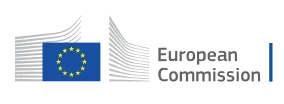[Excerpt]
Lareina Yee: You’ve been a leader in thinking a lot about the societal aspects of the internet. We’ve touched on some of these very big topics. Another one I think is deeply personal for you is accessibility. What do you think needs to be done to ensure that the internet and its relative services are truly inclusive and accessible?
Vint Cerf: It’s going to take a lot of work to make the internet, its applications, and all the other computer-based systems more accessible. There are a couple of reasons why that’s so hard.
The first one is that the people who design the software and user interfaces may not have a lot of intuition into what makes something accessible for a person with a vision problem, a hearing problem, a motor problem, or a cognitive problem.
The other problem is that whatever infirmity you might have, it can encompass a very broad spectrum. So people with hearing problems are either totally deaf or may just need a little amplification. And people with vision problems, similarly, could require magnification or a spoken rendering of what they’re theoretically looking at, because they can’t see it.
All of these things have many gradations, which makes it very hard to design software that works well across these broad spectra. So two things occur to me. The first one is more training and exposure to solutions to these problems, so you begin to see how things get solved effectively.
We also need people with those disabilities helping us try things out, test things, and make recommendations, because no one person with a particular disability can speak to the entire spectrum.
But there is some hope here. With the artificial intelligence and machine learning mechanisms becoming more and more feasible, it’s possible that these mechanisms will help us adapt to improve accessibility.
A trivial example of this is how powerful speech recognition has become so that we’re getting transcripts or captions automatically. The next obvious thing, of course, is language translation. I’m language impaired in many respects, as I only speak one or two, and there are literally thousands of them.
Those kinds of things can help, and that’s just on the language side. I think we’re likely to see other adaptable mechanisms arising out of machine learning that will permit us to build user interfaces that can be tailored to the needs of a particular user.
Lareina Yee: If you look back at the rapid proliferation of the internet and the quick spread of generative AI applications, what are some lessons that you would emphasize for us going forward?
Vint Cerf: First of all, because we’re making it easier and easier to build new applications, there will be more of them. There must be more than a million or maybe even two million applications for mobiles these days. What that means, though, is that just because there is such a proliferation of applications, there is not the same proliferation of skill, with regard to accessibility.
However, if we get really good at using machine learning to make user interfaces more adaptable, then that might actually help solve the problem. Because the users themselves would be engaged and interacting with the software, trying to get it to adapt and adjust—for example, color contrast, sound levels, or even selective frequency amplification. Things of those sorts could be done using machine learning tools.




